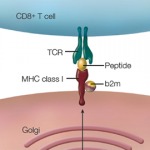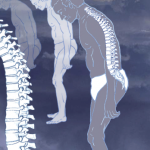Objective
Maksymowych et al. assessed the frequency of axial spondyloarthritis (axSpA) according to extra-articular presentation and human leukocyte antigen B27 (HLA-B27) status. The researchers also sought to identify clinical and imaging features that distinguish patients with axSpA from those with non-specific back pain and to assess the impact of magnetic resonance imaging (MRI) on diagnosis and classification of axSpA.
Methods
The Screening for Axial Spondyloarthritis in Psoriasis, Iritis and Colitis (SASPIC) study enrolled patients in two multi-center cohorts. Consecutive patients with undiagnosed chronic back pain attending dermatology, ophthalmology and gastroenterology clinics and presenting with psoriasis, acute anterior uveitis or inflammatory bowel disease (IBD), respectively were referred to a local rheumatologist with special expertise in axSpA for a structured diagnostic evaluation. The primary outcome was the proportion of patients diagnosed with axSpA by the final global evaluation.
In SASPIC cohort one, MRI evaluation was conducted only if deemed necessary by the local rheumatologist, and the findings were used to inform the diagnosis, as routinely performed in a real-world setting. In SASPIC cohort two, all patients had MRI of the sacroiliac joints, and scans were evaluated first by local radiologists and then by central readers.
Results
In SASPIC cohort one, the frequency of axSpA was 46.7%, 61.6% and 46.8% in patients with psoriasis, acute anterior uveitis or IBD, respectively. In SASPIC cohort two, frequency of axSpA was 23.5%, 57.9% and 23.3% in patients with psoriasis, acute anterior uveitis or IBD, respectively.
Among those who tested positive for the HLA-B27 antigen in SASPIC cohort one, axSpA was diagnosed in 70%, 74.5% and 66.7% of patients with psoriasis, acute anterior uveitis or IBD, respectively. In SASPIC cohort two, axSpA was diagnosed in 71.4%, 87.8% and 55.6% of patients with psoriasis, acute anterior uveitis or IBD, respectively.
All musculoskeletal clinical features were nondiscriminatory. MRI was indicative of axSpA in 60% to 80% of patients and MRI in all patients (SASPIC cohort two) vs. on demand (SASPIC cohort one) led to 25% fewer diagnoses of axSpA in patients who tested negative for the HLA-B27 antigen with psoriasis or IBD. Performance of the Assessment of SpondyloArthritis International Society classification criteria was greater with routine MRI (SASPIC cohort two), although sensitivity was lower than previously reported.
Conclusions
Researchers found a diagnosis of axSpA in 25% of patients with psoriasis or IBD and 60% in patients with acute anterior uveitis. The data support recent referral recommendations that patients with chronic back pain and extra-articular features related to axSpA be referred to a rheumatologist. Optimal management of patients presenting with psoriasis, acute anterior uveitis, IBD and undiagnosed chronic back pain should include referral to a rheumatologist. Conducting MRI in all patients enhances diagnostic accuracy.


